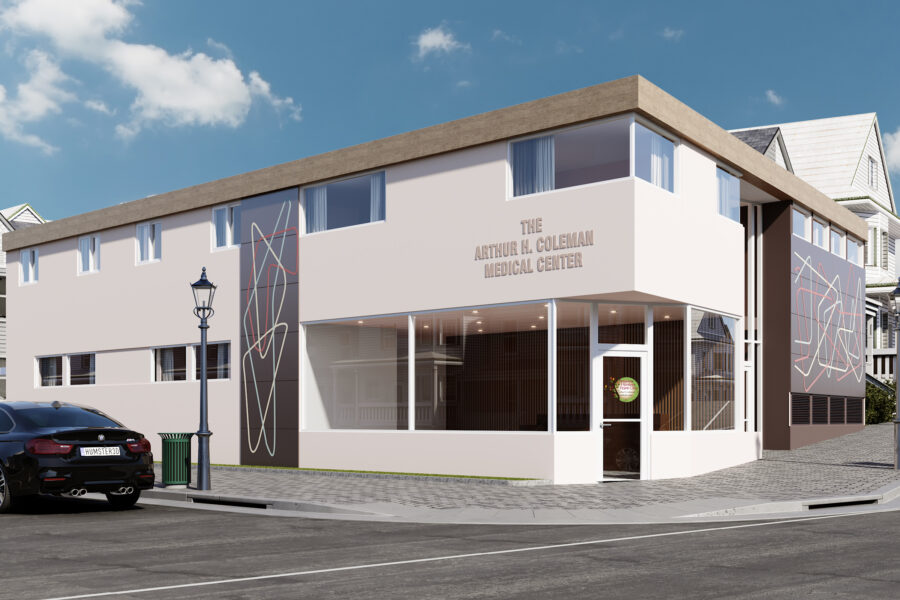Story at a glance:
- Architect Hafsa Burt is designing for equity with healthy places you can believe in.
- Burt is the founder of hb+a Architects, established in 2006.
- She works to respond to the evolving landscapes of modern society, encompassing all things social, cultural, political, and technological as part of her work.
“A lot of people in the Bay Area have been focused on equity in design for a very long time, without the umbrellas of DEI or social justice that have become banner terms,” says Hafsa Burt, the founder and design director of hb+a Architects.
That includes Burt herself, who cites the influence of the late architect Harry Overstreet of Oakland’s Gerson/Overstreet Architects, where Burt worked for some time before establishing hb+a in 2006. “He was working on pretty remarkable projects all over the Bay Area and in Southern California,” Burt says. “And besides being an architect, he was a big civil rights activist. I was fortunate to have known him for a very long time before he passed away in 2019.”
One particularly meaningful project is the West Oakland Youth Center, a collaboration between Gerson/Overstreet and hb+a. A renovation and expansion of a former church building, the center was completed in 2013 and includes amenities like computer labs, a fully equipped commercial kitchen for culinary training, and a 200-seat auditorium.
The project involved extensive consultation with the community—particularly with its target audience of neighborhood youth. “The kids were so involved,” Burt says. “All the stakeholders, the whole local community; everybody was pretty excited about it.”
We had higher standards for indoor air quality when that conversation was just starting.
Burt took on responsibility for the sustainability aspect of the venture, “which was a big thing because the city of Oakland had just passed its green building ordinance, and they had higher aspirations for it,” she says. “And Harry had aspirational goals, too, so it has a rainwater harvesting system; we had higher standards for indoor air quality when that conversation was just starting.”

In 1960 Arthur H. Coleman opened a clinic in San Francisco’s Bay View neighborhood to provide equitable access to health care. hb+a worked on two facilities for this nonprofit in San Francisco and Marin. Facilities like these, grown from grassroots efforts, are remarkable examples of the work that hb+a architects does. The exterior of the Class A culturally historic building was renovated in kind and includes the original lighting fixture from 1960s. Rendering courtesy of hb+a Architects
Burt has made indoor air quality a focus of her own work, regularly presenting on the topic to industry audiences over the past 15 years. She was also an early adopter and proponent of the 2030 Challenge (the initiative to make all new developments carbon-neutral by the year 2030) and is currently co-authoring a white paper for the Urban Land Institute on “how land-use decisions can actually affect public health in terms of access to health care, access to nature, access to clean air—which I see as basic human rights,” she says.

Indoor air quality and natural light are key aspects of much of hb+a’s architecture, as seen here at Terra Glen in San Jose, California. Photo by Jason Foy
“There’s a history of land-use practices in the US being racially motivated, and those practices can actually contribute to [disparities in] the mental and physical health of community members,” Burt adds. She and her co-authors aim to lay out their findings for “how land use and development has been historically, where it is now, and what we think should be the future—as a moral obligation of design professionals” to re-examine those practices, she says. “We can make an impact if we think from that perspective, regardless of the ZIP code.”
Burt also points to the efficacy of renovation versus new construction—not just for sustainability purposes, but for maintaining a community’s sense of ownership. An example is the Marin Health and Wellness Center, a revamp of a 1960s-era clinic in the historically Black San Francisco neighborhood of Bayview.
The building had a landmark designation from the city that meant its exterior could be restored but not altered. “My job was—how can I restore this gem that is so important to the community but that had code problems, access problems, and make it possible to have a functioning, state-of-the-art clinic inside? My general approach to projects might be more avant-garde if they were, you know, ground-up,” Burt says. “But there’s a huge opportunity in bringing existing building stock to its highest use and making it a place of pride for the community.”




